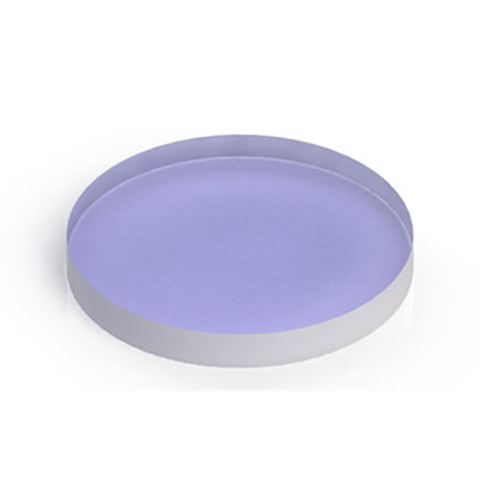Polarizing Cube Beamsplitters
Beamsplitters are often classified according to their construction: cube or plate. Cube beamsplitters are essentially composed of two right angle prisms cemented together at the hypotenuse with a partially reflective coating in between. The hypotenuse surface of one prism is coated, and the two prisms are cemented together so that they form a cubic shape. To avoid damaging the cement, it is recommended that the light be transmitted into the coated prism, which often features a reference mark on the ground surface.
Advantages of cube beamsplitters include easy mounting, durability of the optical coating since it is between the two surfaces, and no ghost images since the reflections propagate back in the direction of the source. Disadvantages of cube are that it is bulkier & heavier than other types of beamsplitters and doesn’t cover as wide a wavelength range as pellicle or polka dot beamsplitters. Though we do offer many different coating options. Also cube beamsplitters should only be used with collimated beams since converging or diverging beams contribute to considerable image quality degradation.
Paralight Optics offers cube beamsplitters available both polarizing and non-polarizing models. Non-polarizing cube beamsplitters are designed to split incident light by a specified ratio that is independent of the light’s wavelength or polarization state. Whereas polarizing beamsplitters will transmit P polarized light and reflect S polarized light allowing the user to add polarized light into the optical system, they can be used to split unpolarized light at a 50/50 ratio, or for polarization separation applications such as optical isolation.

Features:
Substrate Material:
RoHS Compliant
Optical Performance:
High Extinction Ratio
Reflecting S Polariztion:
By 90°
Design Options:
Custom Design Available

Common Specifications:

Reference Drawing for
Polarizing Cube Beamsplitter
Note: The extinction ratio (ER) is defined as the ratio of transmitted p-polarized light to s-polarized light, or Tp/Ts. However, it is important to recognize that Tp/Ts is not usually equal to the ratio of reflected s-polarized light to p-polarized light, or Rs/Rp. As a matter of fact the ratio of Tp/Ts (ER) is almost always better than the ratio of Rs/Rp. This is because beamsplitters are generally effective at reflecting s-polarization but they are not as effective at preventing p-polarization from reflecting, i. e., transmitted light is almost free of s-polarization, but reflected light is not totally free of p-polarization.
Parameters
Ranges & Tolerances
-
Substrate Materials
N-BK7 / SF glass
-
Type
Polarizing cube beamsplitter
-
Dimension Tolerance
+/-0.20 mm
-
Surface Quality (Scratch-Dig)
60-40
-
Surface Flatness (Plano Side)
< λ/4 @632.8 nm per 25mm
-
Transmitted Wavefront Error
< λ/4 @632.8 nm over clear aperture
-
Beam Deviation
Transmitted: 0° ± 3 arcmin | Reflected: 90° ± 3 arcmin
-
Extinction Ratio
Single Wavelength: Tp/Ts > 1000:1
Broad Band: Tp/Ts>1000:1 or >100:1 -
Transmission Efficiency
Single Wavelength: Tp > 95%, Ts < 1%
Broad band: Tp>90% , Ts < 1% -
Reflection Efficiency
Single Wavelength: Rs > 99% and Rp < 5%
Broad band: Rs >99% and Rp < 10% -
Chamfer
Protected < 0.5mm X 45°
-
Clear Aperture
> 90%
-
Coating
Polarizing beamsplitter coating on hypotenuse surface, AR coating on all input and output surfaces
-
Damage Threshold
>500mJ/cm2, 20ns, 20Hz, @1064nm

Graphs
Polarizing cube beamsplitters cover several different wavelength ranges to suit your needs, available both unmounted and mounted versions. Please contact us if you are interested in any type of polarizing cube beamsplitters.

High ER Broadband Polarizating Cube Beamsplitter @620-1000nm

Polarizating Cube Beamsplitter @780nm













